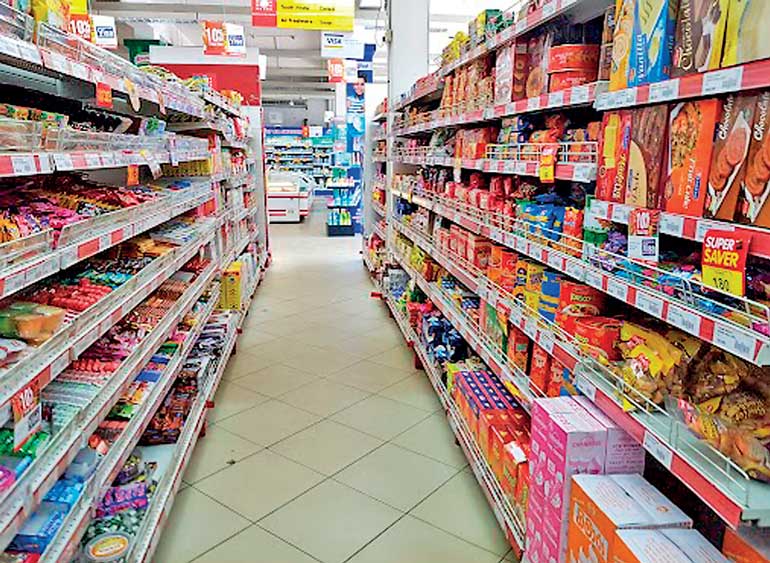Sunday Dec 14, 2025
Sunday Dec 14, 2025
Wednesday, 22 June 2022 00:13 - - {{hitsCtrl.values.hits}}

 Sri Lanka is facing its worst economic crisis in history that affects everyone whether you are rich or poor as the impacts are diverse. Fuel, essential commodities, and pharmaceuticals are among the top of the list which is hard to get for the consumers. Inflation is rising sharply and there are speculations by the economists that it could reach a hyperinflationary level if the money printing by the Government is continued in the way it is done at present. The cost-push inflationary situation is further aggravated by the rising fuel price in the global market. In contrast, the organic fertiliser drama, which was an utter failure is leading to a massive food shortage and let us hope it would not end up in a famine, creating a demand-pull inflationary pressure on food items.
Sri Lanka is facing its worst economic crisis in history that affects everyone whether you are rich or poor as the impacts are diverse. Fuel, essential commodities, and pharmaceuticals are among the top of the list which is hard to get for the consumers. Inflation is rising sharply and there are speculations by the economists that it could reach a hyperinflationary level if the money printing by the Government is continued in the way it is done at present. The cost-push inflationary situation is further aggravated by the rising fuel price in the global market. In contrast, the organic fertiliser drama, which was an utter failure is leading to a massive food shortage and let us hope it would not end up in a famine, creating a demand-pull inflationary pressure on food items.
Prices of all consumer products are continuously on the rise owing to an increase in the costs of raw materials, energy, labour, and transportation. When consumers find it hard to purchase their essentials with the fixed amount of money they have what would be the consequences? They will prioritise their requirements and some items will drop out from their list depending on individual decisions and choices. If the prices go up further the consumers will not only refrain from buying some items but also reduce the quantity they regularly buy. In such a situation what are the options producers have to sell their products? There will be lesser chances for them to follow popular promotional strategies like volume discounts, bundle pricing, etc.
Though not new, a recent trend to market the products has been to resize the packaged product downward, which is known as “shrinkflation”, a term said to be coined by the British economist Pippa Malmgren in 2009. Literally, it is selling the smaller package at the same price as according to behavioural economics more people are sensitive to price rather than package weight or volume.
A few decades ago, laundry soaps came as bars and many consumers were unable to buy a whole bar. During those times merchants used to cut the soap into small pieces using a thread and sold them at prices proportional to the volume. In terms of the product quantity, shrinkflation follows a similar principle and one advantage is that you can afford to buy a well-rapped final product avoiding any embarrassment. Nowadays, many products like soap, toothpaste, milk powder, etc. are following the shrinkflation strategy. However, it is a tough task for the consumer to track the change in the quantity of the product.
Is there anything wrong or fraudulent in this marketing strategy if product price and package weight or volume are clearly shown? In this respect, it would not be illegal. Still, one would say that this is a deceptive strategy as only a literate smart shopper can make the right decision whether to buy it or not as it needs some arithmetic calculations to find the price per unit weight or volume. However, it is very unfair if we expect the consumers to spend time in this scrutinising process considering their fast-paced lifestyles. Hence, the question is whether business ethics crash in when a marketer follows the “shrinkflation” strategy.
On the contrary, package up-sizing is another promotional strategy followed by many marketers which is the opposite of shrinkflation. In this case, marketers offer more quantity for the same price. However, the notable difference here is that many marketers inform the consumers about this quantity increase either by advertising or highlighting it on the package itself. In contrast, shrinkflation may sound like cheating to many consumers as marketers engage in this practice in silence where they conceal the fact that they charge the same price or more for less product quantity. Probably the consumers are frustrated and would switch to substitute products of competitors or unpackaged generic products at the expense of brand loyalty.
Inflation estimates of the country are based on the consumer price index which is based on the increase in the cost of a basket of retail goods and services for a particular period. If items considered in the basket do not have specified weights and volumes shrinkflation affects the inflation statistics as the estimated inflation figure is less than the actual inflation.
On the positive side, as only the products’ size is reduced but not the price, the customers would find the product to be affordable. Most importantly shrinkflation strategy will help companies to maintain their profitability.
In conclusion, companies are not bound to offer their products in the same quantity and it is the consumers’ decision whether to buy them or not. However, we have to take the question of whether the marketers have to be more open with consumers during the shrinkflation process in light of business ethics.